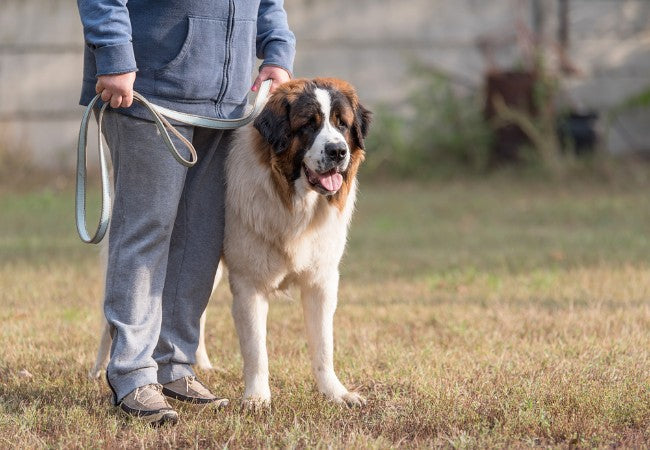Leash Reactivity in Dogs 2025: Vet Approved Guide to Calm & Safe Walks🐾

In this article
Leash Reactivity in Dogs 2025: Vet Approved Guide to Calm & Safe Walks🐾
By Dr. Duncan Houston BVSc
🔍 What Is Leash Reactivity?
Leash reactivity refers to over-the-top behaviors—like barking, lunging, growling, or snapping—triggered when a dog is restrained on leash and feels threatened or blocked. These reactions stem from fear, frustration, or anxiety because the dog can’t escape or interact normally.
Importantly, leash-reactive behavior can escalate into redirected aggression if untreated, potentially risking injury to others.
⚠️ Signs & Body Language
- 🐶 Barking, lunging, snapping, growling at triggers (other dogs, people, vehicles)
- 👀 Intense focus, stiff posture, raised hackles, dilated pupils
- 😰 Signs of anxiety: whining, hiding behind owner, trying to escape
- 😤 Barrier frustration if reactivity occurs behind fences
🧠 Fear vs. Frustration
Determining the root cause shapes training:
- Fear-based reactivity: Distance-increasing, defensive—dog feels threatened.
- Frustration-based reactivity: Wants to interact but can't—distance-decreasing with excitatory behaviors.
🐾 Underlying Causes & Risk Factors
- Poor socialization or past trauma (dog attacks, loud noises)
- Punishment during walks (leash jerks, scolding) worsening emotional response
- Anxiety, medical issues, or inadequate exercise
- Barrier frustration from physical restrictions like fences
📋 Vet Assessment
Before training:
- Rule out medical issues (pain, vision/hearing loss)
- Assess temperament, triggers, prior experiences
- Consider referral to a veterinary behaviorist for severe cases
🛠️ Behavior Modification & Training
Effective reactivity training combines:
1. Management & Safety
- Avoid triggers initially; keep sufficient distance
- Use a no-pull harness or head halter to reduce leash pressure
2. Desensitization & Counterconditioning
- Gradually expose at sub-threshold levels while feeding treats
- Clicker or marker used to reinforce calm behavior near triggers
3. Teach Alternative Behaviors
- Train “watch me,” heel, pivot turns—redirect attention before reaction
- Reward compliance and focus consistently
4. Reinforce & Generalize Skills
- Practice in varied locations once mastered at home
- Manage backsliding—dogs can relapse under stress
Consistency, patience, and calm handling on your part are vital.
🎒 Gear & Tools That Help
- No-pull harness: Reduces strain and redirects tension
- Head halter: Aids focus away from triggers
- High-value treats: Praise or treat pouches for counterconditioning
- Calming aids: Pheromone collars, anxiety vests, or supplements from Purrz
🧸 Ask A Vet,
- 🩺 **Ask A Vet:** Personalized training plans, behavior analysis, ongoing support
📊 Training Plan Snapshot
| Step | Action | Goal |
|---|---|---|
| 1. Avoidance | Walk wide around triggers | Keep the dog below the threshold |
| 2. Redirection | Teach “watch me” + treat near trigger | Create a new positive response |
| 3. Gradual exposure | Move closer as the dog remains calm | Desensitization |
| 4. Reinforce | Frequent rewards, fade treats slowly | Generalize calm behavior |
| 5. Monitor | Track progress, adjust distance | Maintain gains |
🎯 Final Thoughts
Leash reactivity is a common and manageable behavior—once understood as fear or frustration. With a structured training approach involving desensitization, redirection, proper gear, and positive reinforcement, most dogs can learn calm, confident leash manners. Support from Ask A Vet 🐾.
— Dr Duncan Houston, BVSc
Need a ready-to-go leash reactivity plan or behavior consultation? Visit AskAVet.com or download the Ask A Vet app for expert support anytime.






